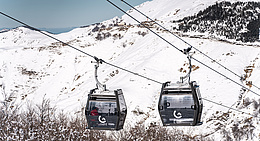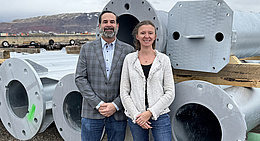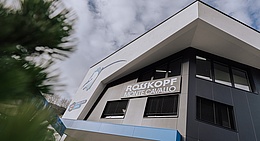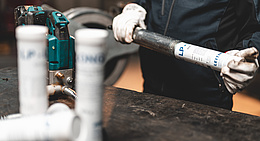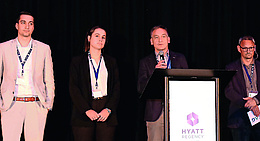The Wiesner company in Chrudim built the very first chairlift in Europe, the Ráztoka – Pustevny single-seat chairlift, back in 1940. After the Second World War the company, which had been nationalized in the meantime and was operating under the name Transporta Chrudim, acquired a license for the construction of chairlifts from the Swiss Von Roll company and used their system to build a total of nine sections of detachable double chairlifts with VR-101 grips in what was then Czechoslovakia. One of these lifts, the Krupka – Komáří Vížka (or Komáří Hůrka) chairlift in Krušné hory (Ore Mountains) is the last chairlift using the VR-101 grips still in operation in the world today (see ISR 6/2022, pp. 28-30).
Back to fixed grips
In response to infringements of the license agreement with the Swiss Von Roll company committed by Transporta Chrudim under pressure from the Communist government, which wanted to prevent cooperation with the “evil” West at all costs, Von Roll terminated the agreement, and the Czechoslovak company was forced to develop chairlifts of its own design. These were fixed-grip chairlifts, which were a much simpler and also cheaper solution.
The first single-seat chairlift of this type was built in 1954/1955 for Sarajevo in what was then Yugoslavia. However, the customer refused to take delivery of the ropeway, and a substitute location had to be found for the chairlift in Czechoslovakia. Four years later, a ropeway was finally built in Sarajevo by Transporta, a detachable bicable gondola lift with 4-passenger cabins, which was damaged during the war in Yugoslavia at the beginning of the 1990s and replaced by a 10-passenger gondola lift from Leitner in 2018.
But back to our chairlift: It was finally decided to install this lift on Javorový Hill in Oldřichovice near the town of Třinec. The idea was that the chairlift should serve the recreational needs of the employees working in the harsh conditions of the local Třinecké železárny ironworks.
An unwanted child from the start
The 1,310 m long chairlift went into service on July 7, 1957. The overhead drive and the counterweight tensioning assembly for the haul rope are located in the bottom station, as is a diesel generator recycled from a submarine with an output of 100 kW, which serves as an emergency power source. The top station simply houses a fixed return sheave. The original chairs had wooden seats and a small canvas canopy. Coil springs were fitted to the chair hangers to dampen the jolts caused on passage over the sheave trains and under the vertical deflection sheaves installed on the line at the exit and entrance to the bottom station and also on towers nos. 6 and 10. These deflection sheaves had the same function as the sheave trains on modern hold-down towers.
Lattice towers were used for the line. This was the solution adopted by Transporta for five of its first single-seat chairlifts until the much more attractive tubular towers were introduced for the construction of the company’s sixth fixed-grip chairlift, the Krásetín – Kleť chairlift built in South Bohemia in 1961.
As with most ropeways from the 1940s and 1950s, the Czechoslovak State Railways (ČSD) were appointed to operate the chairlift. The ČSD were not particularly happy with this decision and tried to sell the lift at the end of 1957. As no one was interested in buying it, however, it continued to be owned and run by the ČSD until 1996. Apart from the need to replace items of the electrical system in 1985, no refurbishment work was carried out on the chairlift under the management of the ČSD.
Privatization and modernization
On June 1, 1996 the ropeway became one of the last in the country to be privatized. The new owners, Bytoslan s.r.o., undertook the necessary refurbishment in 1997. New sheave trains were installed to replace the original suspended rope sheaves, and the chairs were also replaced – obtained from the discontinued Slovakian Turecká – Krížna chairlift. As the Slovakian installation had a much longer line, there were enough chairs left over as spares.
Even after this much-needed refurbishment, the system and character of the chairlift have hardly changed.
The single-seat lift is in operation all year round. In summer it provides access to popular hiking trails and in winter to groomed cross-country ski trails and a small ski area with two surface lifts. The district authority contributes to the maintenance of the chairlift and preparation of the slopes and cross-country ski trails to ensure continued operation of the ropeway and what is a popular local recreation area. There are currently no plans to renovate the installation.
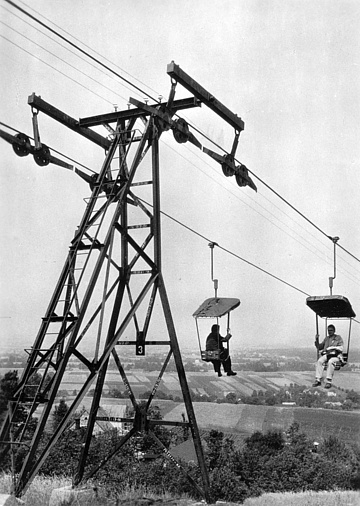
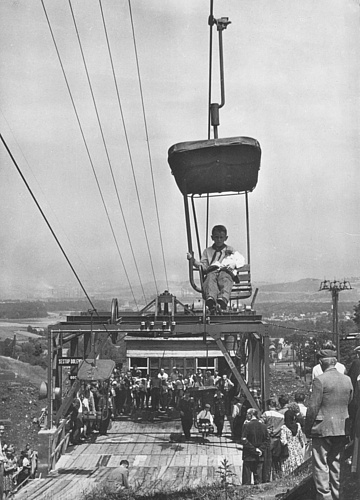
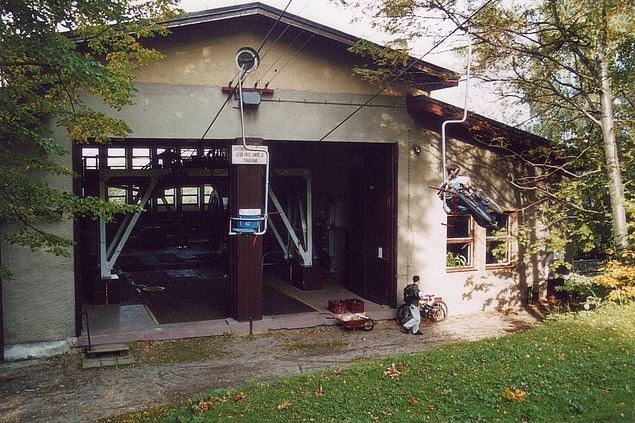
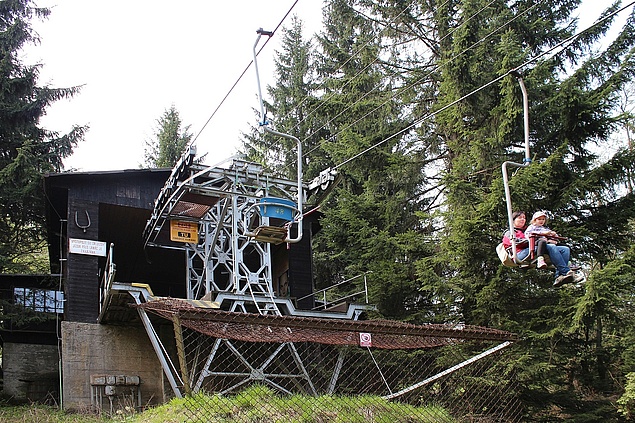

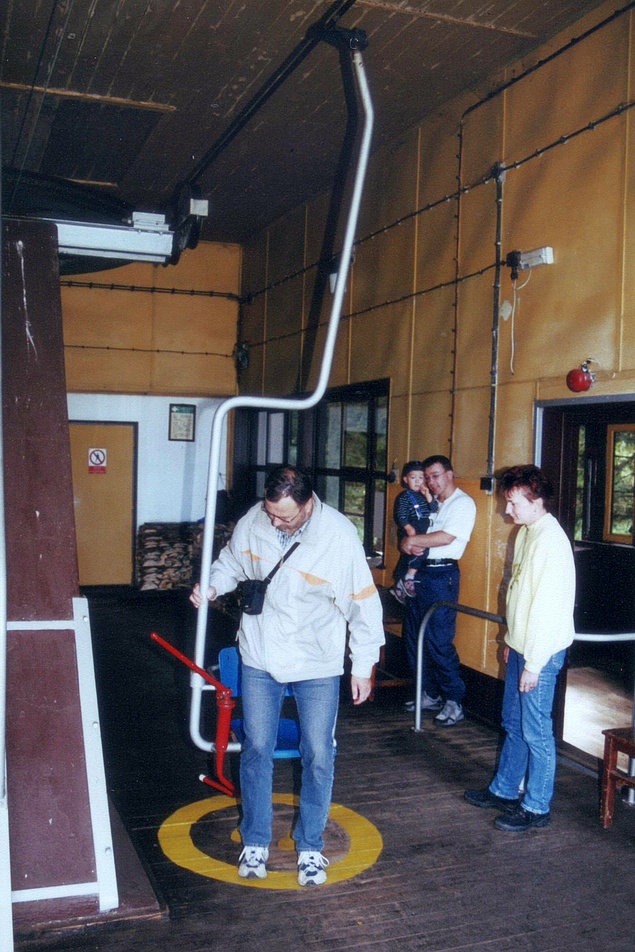
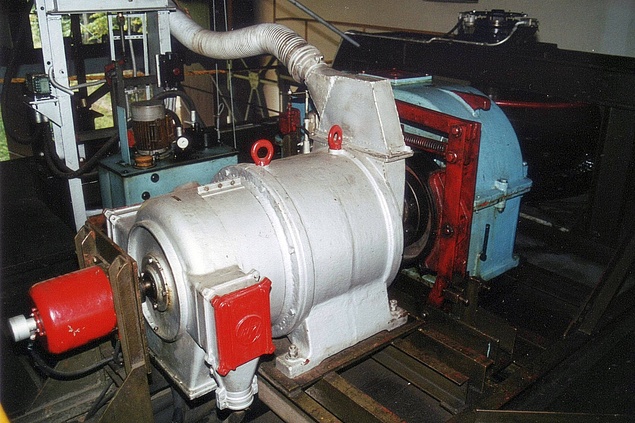
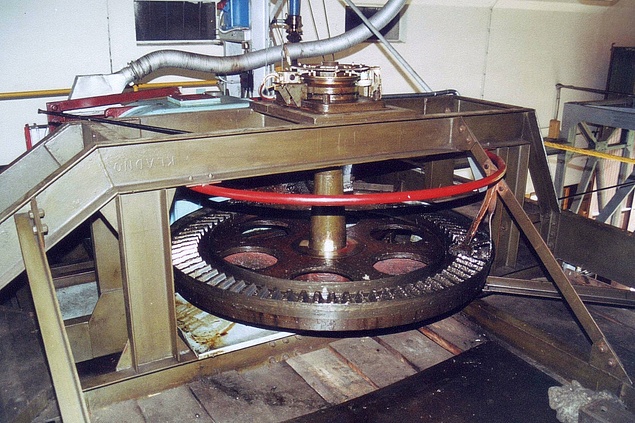
![[Translate to English:] Foto: Leitner](/fileadmin/_processed_/a/8/csm_Vertragsunterzeichnung_Narvik_6_copyright_LEITNER_print_501f2d5c24.jpg)
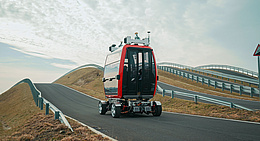
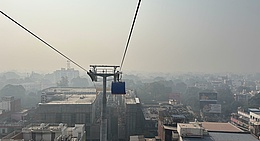
![[Translate to English:] (c) Doppelmayr](/fileadmin/_processed_/b/3/csm_85-ATW_Stechelberg-Muerren_Lauterbrunnen_CHE_001_6442c0520d.jpg)

